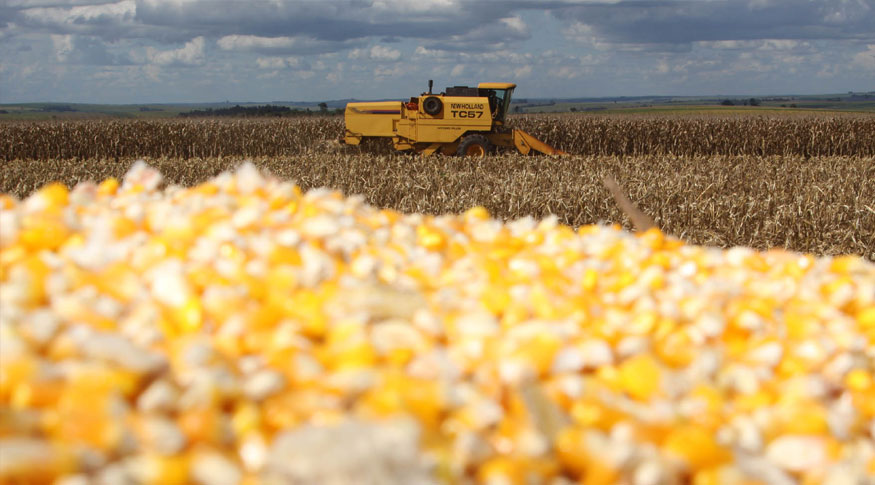Agricultural production
First estimate of the year forecasts record harvest of 271.9 million tonnes in 2022
February 10, 2022 09h00 AM | Last Updated: February 11, 2022 12h45 PM

According to the January estimate of the Systematic Survey of Agricultural Production (LSPA), released today (10) by the IBGE, the national harvest of cereals, legumes and oilseeds should reach 271.9 million tonnes in 2022. Compared with the third forecast, published last month, it reduced 1.9%, which represents less 5.2 million tonnes. Even with the reduction, the harvest should be 7.4% greater than that of 2021.
“The reduction in the estimate is due to the drop in the summer harvest, mainly caused by the strong drought that is hitting the southern states, like Paraná and Santa Catarina. It reduced the estimate for soybeans by 4.7% in relation to the third forecast and by 2.3% in the comparison with what was produced last year. Only soybeans represents a drop of 6.5 million tonnes against the last month´s estimate,” explains Carlos Barradas, manager of the survey.
Even with a smaller output than that of the previous year, soybeans, the major Brazilian commodity, should account for 48.5% of the total cereals, legumes and oilseeds produced in Brazil. Altogether, rice, corn and soybeans represent 93.0% of the output estimated for 2022. Of these three major products, only corn should surpass the production of 2021.
“Last year, the production of corn was jeopardized, because the harvest of soybeans was delayed. It decreased the planting window of the second crop, making it more dependent on the weather. As it lacked rainfall, it jeopardized the development of the crops. This year, the output estimate of corn is quite growing as a result of the second crop, which has a very low comparison basis. Moreover, soybean seeding was anticipated, which should increase the planting window and favor corn, cotton and sorghum,” states him.
The output of corn was estimated at 109.9 million tonnes, an increase of 0.9% in relation to the previous month´s forecast and of 25.2% in relation to the production in 2021. In the first crop, the increase in relation to what was produced last year should be of 6.1%. As a result of the drought in the South, the estimate for that grain fell 4.6% against what was expected in the third forecast. On the other hand, the second crop should reach 82.7 million tonnes. It is a growth of 2.9% against the last forecast and of 33.1% in relation to what was produced in 2021.
Beans is another crop whose output increased both against what was expected in the third forecast and against the total produced last year. Including the three crops, that legume should reach 3.1 million tonnes. “The first crop of beans declined 6.4% against the previous estimate, caused by the lack of rainfall in the southern producing states. The second crop increased 20%, since a fair planting window encouraged producers to invest. Both the output of beans and rice should address the demand of the domestic market,” says Barradas. The output of rice was estimated at 11.0 million tonnes, a drop of 4.9% over the 2021 harvest.
The output of coffee also stood out, as it should be 13.6% greater than that in the previous year. The two species of grain, arabica and canephora, should add up to 3.4 million tonnes. The year will be of positive biennial bearings - when, in alternate years, the grain has a high productivity -, which should guarantee a harvest 20.2% above what was produced of coffea arabica in 2021.
“Most of the coffee is produced in high regions or hills, where it was very cold in the winter last year. Some producing regions faced frosts. It reduced the potential output, though the positive biennial bearings should cause the harvest to improve a lot,” explains the researcher. Concerning coffea canephora, also known as conillon, it should reach 1.0 million tonnes, which represents a growth of 1.2% in relation to 2021.
Three regions register a drop in the production estimates
Among the major regions, the Northeast was the only to increase (1.1%) its estimate over the previous month. Producing 24.4 million tonnes, that region should account for 9.0% of the entire country. The greatest drop was recorded in the South (-5.7%), which should add up to 80.2 million tonnes (29.5% of the total). The North dropped its estimate by 2.6% and should add up to 12.0 million tonnes (4.4% of the total). Having declined 0.2%, the Central-West should produce 128.4 million tonnes or 47.2% of the national output. The output in the Southeast remained stable and should be of 26.8 million tonnes (9.9% of the total).
In the comparison among the Federation Units, Mato Grosso leads as the biggest producer of grains, with a share of 28.5%, followed by Rio Grande do Sul (14.1%), Paraná (13.1%), Goiás (9.9%), Mato Grosso do Sul (8.5%) and Minas Gerais (6.2%), which, together, represented 80.3% of the national overall.
About the LSPA
Launched in November 1972 aiming at addressing the demand of users for monthly short-term statistical information, the LSPA provides estimates of planted area, harvested area, amount produced and average yield of products selected based on criteria of economic and social importance for Brazil. It does not only monitor each crop investigated in the calendar year of reference, from the intention to plant up to the end of the harvest, but also presents the forecast for the coming year, with surveys in the months of October, November and December. See available data at Sidra.




















